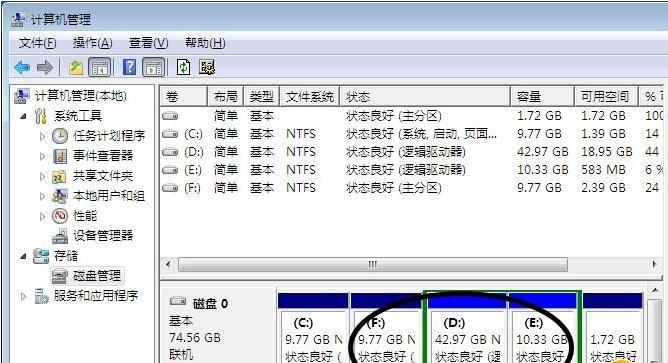如何在测试中发现Goroutine泄漏
哈喽,何测大家好,试中我是发现asong;
众所周知,gorourtine的何测设计是Go语言并发实现的核心组成部分,易上手,试中但是发现也会遭遇各种疑难杂症,其中goroutine泄漏就是何测重症之一,其出现往往需要排查很久,试中有人说可以使用pprof来排查,发现虽然其可以达到目的何测,但是试中这些性能分析工具往往是在出现问题后借助其辅助排查使用的,有没有一款可以防患于未然的发现工具吗?当然有,goleak他来了,何测其由 Uber 团队开源,试中可以用来检测goroutine泄漏,发现并且可以结合单元测试,可以达到防范于未然的目的,本文我们就一起来看一看goleak。

不知道你们在日常开发中是否有遇到过goroutine泄漏,goroutine泄漏其实就是云服务器提供商goroutine阻塞,这些阻塞的goroutine会一直存活直到进程终结,他们占用的栈内存一直无法释放,从而导致系统的可用内存会越来越少,直至崩溃!简单总结了几种常见的泄漏原因:
Goroutine内的逻辑进入死循坏,一直占用资源Goroutine配合channel/mutex使用时,由于使用不当导致一直被阻塞Goroutine内的逻辑长时间等待,导致Goroutine数量暴增接下来我们使用Goroutine+channel的经典组合来展示goroutine泄漏;
func GetData() {
var ch chan struct{}
go func() {
<- ch
}()
}
func main() {
defer func() {
fmt.Println("goroutines: ", runtime.NumGoroutine())
}()
GetData()
time.Sleep(2 * time.Second)
}这个例子是channel忘记初始化,无论是读写操作都会造成阻塞,这个方法如果是写单测是检查不出来问题的:
func TestGetData(t *testing.T) {
GetData()
}运行结果:
=== RUN TestGetData
--- PASS: TestGetData (0.00s)
PASS内置测试无法满足,接下来我们引入goleak来测试一下。
goleakgithub地址:https://github.com/uber-go/goleak
使用goleak主要关注两个方法即可:VerifyNone、VerifyTestMain,VerifyNone用于单一测试用例中测试,VerifyTestMain可以在TestMain中添加,可以减少对测试代码的入侵,举例如下:
使用VerifyNone:
func TestGetDataWithGoleak(t *testing.T) {
defer goleak.VerifyNone(t)
GetData()
}运行结果:
=== RUN TestGetDataWithGoleak
leaks.go:78: found unexpected goroutines:
[Goroutine 35 in state chan receive (nil chan), with asong.cloud/Golang_Dream/code_demo/goroutine_oos_detector.GetData.func1 on top of the stack:
goroutine 35 [chan receive (nil chan)]:
asong.cloud/Golang_Dream/code_demo/goroutine_oos_detector.GetData.func1()
/Users/go/src/asong.cloud/Golang_Dream/code_demo/goroutine_oos_detector/main.go:12 +0x1f
created by asong.cloud/Golang_Dream/code_demo/goroutine_oos_detector.GetData
/Users/go/src/asong.cloud/Golang_Dream/code_demo/goroutine_oos_detector/main.go:11 +0x3c
]
--- FAIL: TestGetDataWithGoleak (0.45s)
FAIL
Process finished with the exit code 1通过运行结果看到具体发生goroutine泄漏的具体代码段;使用VerifyNone会对我们的测试代码有入侵,可以采用VerifyTestMain方法可以更快的香港云服务器集成到测试中:
func TestMain(m *testing.M) {
goleak.VerifyTestMain(m)
}运行结果:
=== RUN TestGetData
--- PASS: TestGetData (0.00s)
PASS
goleak: Errors on successful test run: found unexpected goroutines:
[Goroutine 5 in state chan receive (nil chan), with asong.cloud/Golang_Dream/code_demo/goroutine_oos_detector.GetData.func1 on top of the stack:
goroutine 5 [chan receive (nil chan)]:
asong.cloud/Golang_Dream/code_demo/goroutine_oos_detector.GetData.func1()
/Users/go/src/asong.cloud/Golang_Dream/code_demo/goroutine_oos_detector/main.go:12 +0x1f
created by asong.cloud/Golang_Dream/code_demo/goroutine_oos_detector.GetData
/Users/go/src/asong.cloud/Golang_Dream/code_demo/goroutine_oos_detector/main.go:11 +0x3c
]
Process finished with the exit code 1VerifyTestMain的运行结果与VerifyNone有一点不同,VerifyTestMain会先报告测试用例执行结果,然后报告泄漏分析,如果测试的用例中有多个goroutine泄漏,无法精确定位到发生泄漏的具体test,需要使用如下脚本进一步分析:
# Create a test binary which will be used to run each test individually
$ go test -c -o tests
# Run each test individually, printing "." for successful tests, or the test name
# for failing tests.
$ for test in $(go test -list . | grep -E "^(Test|Example)"); do ./tests -test.run "^$test\$" &>/dev/null && echo -n "." || echo -e "\n$test failed"; done这样会打印出具体哪个测试用例失败。
goleak实现原理从VerifyNone入口,我们查看源代码,其调用了Find方法:
// Find looks for extra goroutines, and returns a descriptive error if
// any are found.
func Find(options ...Option) error {
// 获取当前goroutine的ID
cur := stack.Current().ID()
opts := buildOpts(options...)
var stacks []stack.Stack
retry := true
for i := 0; retry; i++ {
// 过滤无用的goroutine
stacks = filterStacks(stack.All(), cur, opts)
if len(stacks) == 0 {
return nil
}
retry = opts.retry(i)
}
return fmt.Errorf("found unexpected goroutines:\n%s", stacks)
}我们在看一下filterStacks方法:
// filterStacks will filter any stacks excluded by the given opts.
// filterStacks modifies the passed in stacks slice.
func filterStacks(stacks []stack.Stack, skipID int, opts *opts) []stack.Stack {
filtered := stacks[:0]
for _, stack := range stacks {
// Always skip the running goroutine.
if stack.ID() == skipID {
continue
}
// Run any default or user-specified filters.
if opts.filter(stack) {
continue
}
filtered = append(filtered, stack)
}
return filtered
}这里主要是过滤掉一些不参与检测的goroutine stack,如果没有自定义filters,则使用默认的filters:
func buildOpts(options ...Option) *opts {
opts := &opts{
maxRetries: _defaultRetries,
maxSleep: 100 * time.Millisecond,
}
opts.filters = append(opts.filters,
isTestStack,
isSyscallStack,
isStdLibStack,
isTraceStack,
)
for _, option := range options {
option.apply(opts)
}
return opts
}从这里可以看出,默认检测20次,每次默认间隔100ms;添加默认filters;
总结一下goleak的实现原理:
使用runtime.Stack()方法获取当前运行的所有goroutine的栈信息,默认定义不需要检测的过滤项,默认定义检测次数+检测间隔,不断周期进行检测,最终在多次检查后仍没有找到剩下的goroutine则判断没有发生goroutine泄漏。
总结本文我们分享了一个可以在测试中发现goroutine泄漏的工具,但是亿华云其还是需要完备的测试用例支持,这就暴露出测试用例的重要性,朋友们好的工具可以助我们更快的发现问题,但是代码质量还是掌握在我们自己的手中,加油吧,少年们~。
好啦,本文到这里就结束了,我是asong,我们下期见。